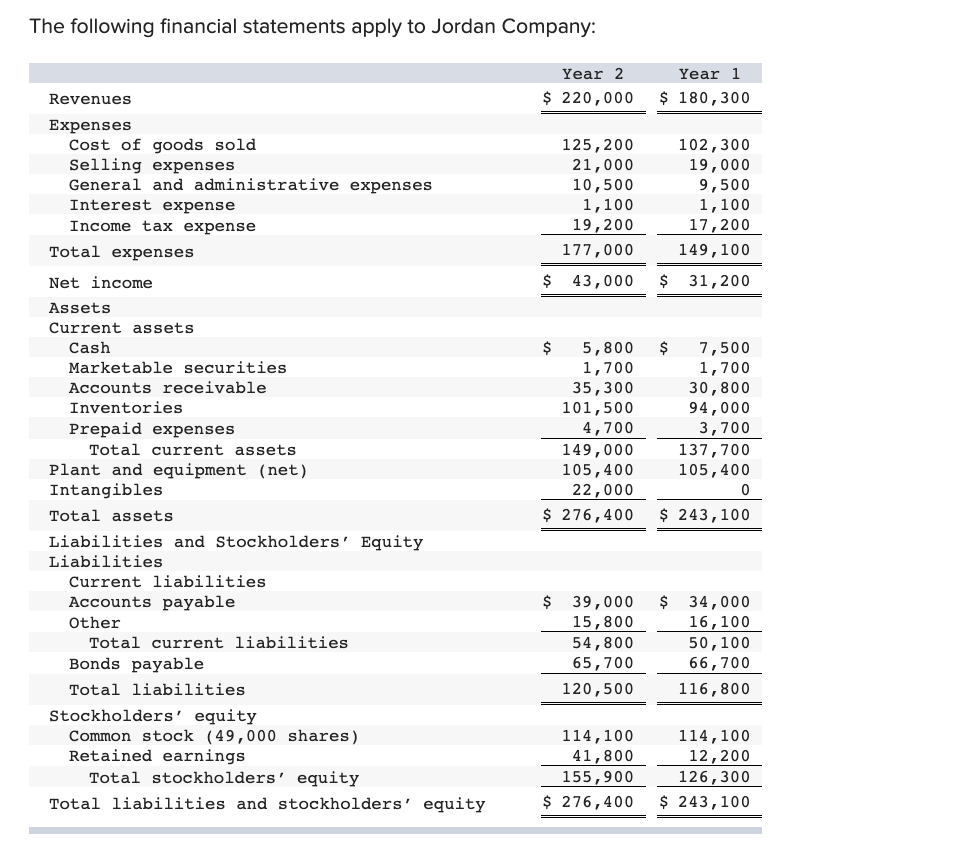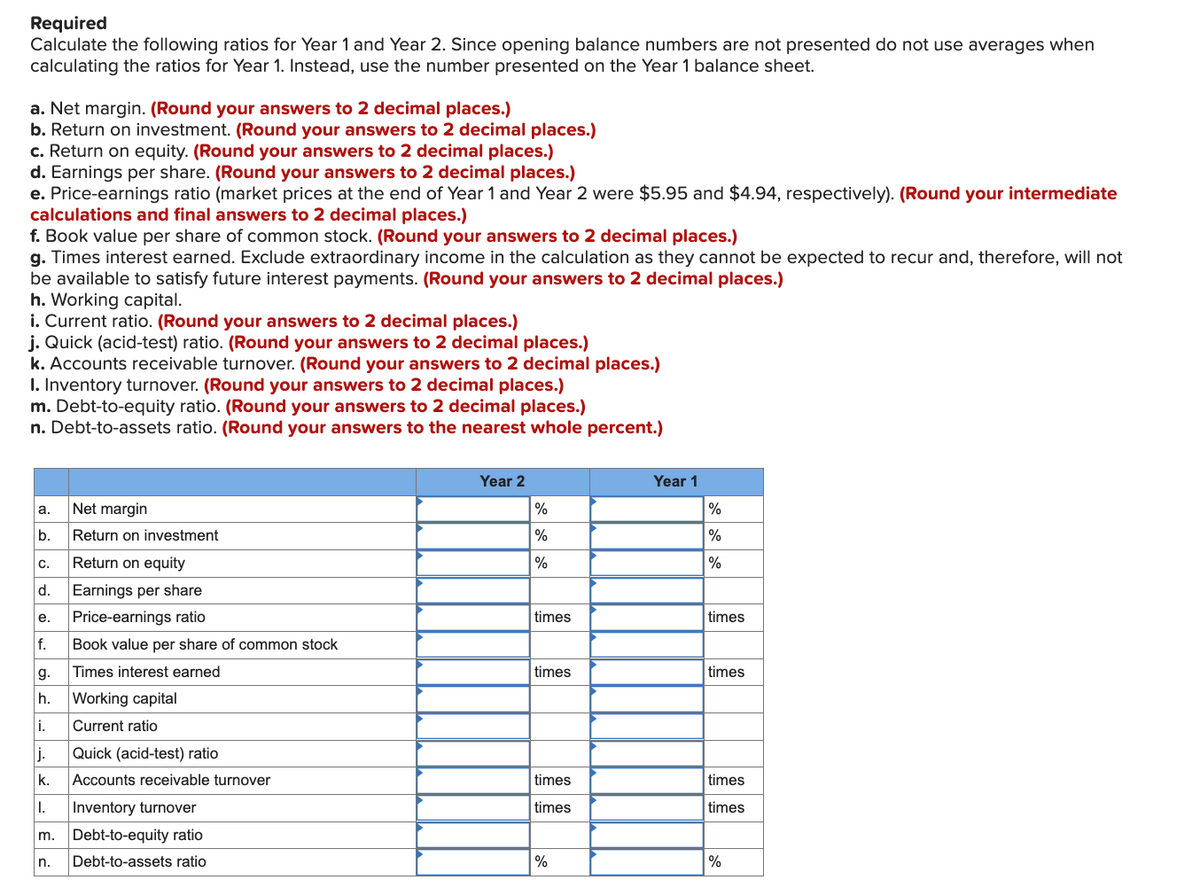The following financial statements apply to Jordan Company: Year 2 Year 1 $ 180,300 Revenues $ 220,000 Expenses Cost of goods sold 125,200 102,300 Selling expenses 21,000 19,000 General and administrative expenses 10,500 9,500 Interest expense 1,100 1,100 Income tax expense 19,200 17,200 Total expenses 177,000 149, 100 Net income $ 43,000 $ 31,200 Assets Current assets Cash $ 5,800 $ 7,500 1,700 1,700 Marketable securities Accounts receivable Inventories 35,300 30,800 101,500 94,000 Prepaid expenses 4,700 3,700 Total current assets 149,000 137,700 Plant and equipment (net) 105,400 105,400 22,000 Intangibles 0 Total assets $ 276,400 $ 243,100 Liabilities and Stockholders' Equity Liabilities Current liabilities Accounts payable $ 39,000 $ 34,000 Other 15,800 16,100 Total current liabilities 54,800 50, 100 Bonds payable 65,700 66,700 Total liabilities 120,500 116,800 Stockholders' equity 114,100 114,100 Common stock (49,000 shares) Retained earnings 41,800 12,200 Total stockholders' equity 155,900 126,300 Total liabilities and stockholders' equity $ 276,400 $ 243,100
Reporting Cash Flows
Reporting of cash flows means a statement of cash flow which is a financial statement. A cash flow statement is prepared by gathering all the data regarding inflows and outflows of a company. The cash flow statement includes cash inflows and outflows from various activities such as operating, financing, and investment. Reporting this statement is important because it is the main financial statement of the company.
Balance Sheet
A balance sheet is an integral part of the set of financial statements of an organization that reports the assets, liabilities, equity (shareholding) capital, other short and long-term debts, along with other related items. A balance sheet is one of the most critical measures of the financial performance and position of the company, and as the name suggests, the statement must balance the assets against the liabilities and equity. The assets are what the company owns, and the liabilities represent what the company owes. Equity represents the amount invested in the business, either by the promoters of the company or by external shareholders. The total assets must match total liabilities plus equity.
Financial Statements
Financial statements are written records of an organization which provide a true and real picture of business activities. It shows the financial position and the operating performance of the company. It is prepared at the end of every financial cycle. It includes three main components that are balance sheet, income statement and cash flow statement.
Owner's Capital
Before we begin to understand what Owner’s capital is and what Equity financing is to an organization, it is important to understand some basic accounting terminologies. A double-entry bookkeeping system Normal account balances are those which are expected to have either a debit balance or a credit balance, depending on the nature of the account. An asset account will have a debit balance as normal balance because an asset is a debit account. Similarly, a liability account will have the normal balance as a credit balance because it is amount owed, representing a credit account. Equity is also said to have a credit balance as its normal balance. However, sometimes the normal balances may be reversed, often due to incorrect journal or posting entries or other accounting/ clerical errors.


Trending now
This is a popular solution!
Step by step
Solved in 4 steps









